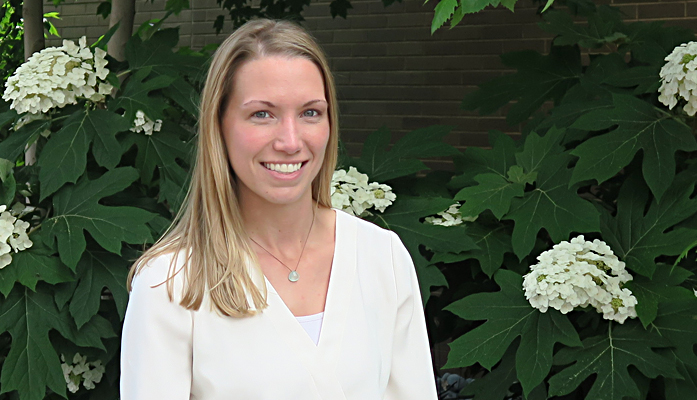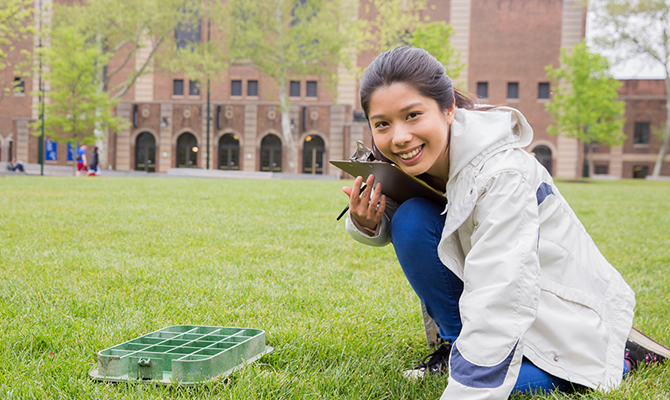
To preserve land for the future, Kristen Henwood (Master of Environmental Studies ‘12) looks to the past. As Associate Director of Stewardship at Willistown Conservation Trust, she assists in turning mowed lawns into meadows and restores stream banks with plants that were growing in Pennsylvania before European settlers arrived. “Native species are the best suited to this environment,” she explains. “They’re going to be the most efficient, and they aren’t going to need a lot of care in terms of fertilizers or extra irrigation once established.” Native plants also play an important role in a thriving ecosystem: nourishing the indigenous insect and bird populations that evolved to depend on them. Kristen’s knowledge of ecological landscapes emerged from her experience in sustainable design and an interest in environmental sustainability that led her to the Master of Environmental Studies (MES) program at Penn.
Kristen graduated with a political science degree and worked as a consultant to the EPA’s Region III office in Philadelphia and then for several years in higher education. The MES environmental sustainability concentration and the customizability of the master’s program brought her to Penn, where she learned how to break down big concepts for young learners in environmental education courses and gained firsthand experience applying sustainability practices to urban landscape planning. As a graduate student intern at Penn, Kristen worked with the University’s Landscape Architect and Landscape Planner, assisting in overseeing the addition of native plant habitats, stormwater management, and long-term monitoring systems in Shoemaker Green, a public commons on Penn’s campus. “The MES program gave me the flexibility and freedom to pursue my passions,” she says, “and gaining experience in my graduate internship was invaluable to my next steps.”
Those next steps took Kristen to Willistown Conservation Trust, where her work includes helping to oversee the care of three preserves and a 1-acre native wildflower meadow and teaching others why and how to promote ecological health. Drawing on her past experience in education, Kristen guides local high school seniors through projects such as marking trails on the preserves and restoring stream banks with native trees and shrubs that help prevent erosion and keep stream waters cool. She also works with conservation easement landowners, assisting them in improving their properties or developing projects in accordance with these legal agreements designed to protect natural features such as woodland areas or high-quality streams. “Conservation work is sometimes viewed as being too focused on the past or preserving nature in a pristine state prior to human intervention,” she observes, as she describes helping a landowner who is planning to install solar panels that comply with legal terms that were written long before the technology was imagined. But while restoring forested areas along stream banks and selecting native plant species is an important part of the work, land conservation inevitably means thinking ahead. “I’ve gathered research relating to preparing for climate change and selecting native plant species that are better able to adapt in light of what we’re going to see in climate trends,” she says. “If we have one foot in the past, we’re also planning for the future.”





